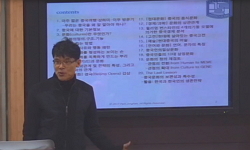개혁개방 이후 중국은 투자와 수출이 주요 동력으로 성장을 견인하였으나, 2008년 글로벌 금융위기 이후 지속 가능하고 안정적인 성장 동력인 소비의 중요성을 강조하며 소비주도형 경제 성...
http://chineseinput.net/에서 pinyin(병음)방식으로 중국어를 변환할 수 있습니다.
변환된 중국어를 복사하여 사용하시면 됩니다.
- 中文 을 입력하시려면 zhongwen을 입력하시고 space를누르시면됩니다.
- 北京 을 입력하시려면 beijing을 입력하시고 space를 누르시면 됩니다.
부가정보
국문 초록 (Abstract)
개혁개방 이후 중국은 투자와 수출이 주요 동력으로 성장을 견인하였으나, 2008년 글로벌 금융위기 이후 지속 가능하고 안정적인 성장 동력인 소비의 중요성을 강조하며 소비주도형 경제 성장 전략을 추진중이다. 본 연구는 소비 주도 성장 전략에 따른 주민 소득 및 소비 특징과 소비 구조를 분석하는 것을 목적으로 한다. 먼저, 중국의 낮은 소비율과 주민 소득과 소비 변화 추이 및 소비 성향을 분석하였다. 중국의 가계 최종 소비 지출은 2000년 중반부터 GDP의 40% 이하를 기록하고 있는데, 이는 미국의 약 70%의 소비율과 비교하여 상당히 낮은 수준이다. 중국의 도시와 농촌 주민 1인당 가처분소득과 소비 지출은 경제 성장에 따라 증가해왔으며, 농촌 지역의 높은 평균소비성향을 통해 경제 성장과 이를 통한 소득 증대는 소비 진작에 긍정적으로 작용할 것을 예상할 수 있다. 또한, 2010년과 2020년의 CFPS(China Family Panel Studies) 서베이 데이터를 활용하고, 인구통계학적 변수를 포함한 QUAIDS(Quadratic Almost Ideal Demand System) 모형을 적용하여 도시 가계의 소비 구조에 대한 실증분석을 진행하였다. 분석 결과, 중국 도시 가계의 소비 구조는 점차 교통통신, 교육문화 등 서비스 수요 중심으로 변화하는 것으로 나타났으며, 높은 주거비 부담과 고령화에 따른 의료보건비 증가가 소비 제약요인이 될 가능성이 존재한다. 따라서 중국 정부의 관련 분야 재정 확대는 가계 소비 증가로 이어질 것을 시사한다.
다국어 초록 (Multilingual Abstract)
Over the last three decades, China has been dependent on investment and exports for economic growth. From mid-1990s, consumption as a share of GDP in China has steadily declined, which is key factor in supporting sustainable and stable economic develo...
Over the last three decades, China has been dependent on investment and exports for economic growth. From mid-1990s, consumption as a share of GDP in China has steadily declined, which is key factor in supporting sustainable and stable economic developments. Since 2008 financial crisis, Chinese government has been pushing toward a consumption-driven growth model and has been boosting domestic demand. The main objective of this study is to analyze household income and consumption growth and consumption structure under the consumption-led growth strategy. First, it examines China’s consumption rate and the changes in economic growth and household income and consumption growth. China’s household final consumption expenditure accounted under 40% of its GDP from mid-2000, compared with around 70% in United States. In China, urban and rural residents’ per capita disposable income and consumption expenditure has been increasing as economic growth. The high APC(average propensity to consume) in rural area suggests that income growth will have a positive effect on consumption. This study uses data from the China Family Panel Studies (CFPS) survey data to estimate Chinese urban household consumption structure in 2010 and 2020, relying on QUAIDS(Quadratic Almost Ideal Demand System) model with demographics. The empirical results show that expenditure on transportation, education and housing have been increasing and consumption structure varies across households, with demographic variables such as age of household. Also, the empirical findings indicate that the burden of medical care for elderly household are particularly heavy. Therefore, the fiscal expansion would lead to increases in household consumption in China.
목차 (Table of Contents)
- Ⅰ. 서론
- Ⅱ. 선행연구
- Ⅲ. 중국의 주민 소비 특징
- Ⅳ. 중국 도시 주민 소비 구조 실증분석
- Ⅴ. 결론
- Ⅰ. 서론
- Ⅱ. 선행연구
- Ⅲ. 중국의 주민 소비 특징
- Ⅳ. 중국 도시 주민 소비 구조 실증분석
- Ⅴ. 결론
- 참고문헌
- 국문초록
- Abstract
동일학술지(권/호) 다른 논문
-
중국 도시 상주 후커우 취득제도 연구 – 베이징, 광저우, 다롄을 중심으로 –
- 중국지역학회
- 김동하
- 2025
- KCI등재
-
- 중국지역학회
- 당위
- 2025
- KCI등재
-
中韩人工智能全球治理研究 – 以美国的人工智能战略为中心 –
- 중국지역학회
- 胥芊
- 2025
- KCI등재
-
- 중국지역학회
- 王馨诺
- 2025
- KCI등재





 eArticle
eArticle






